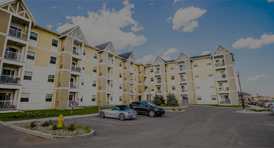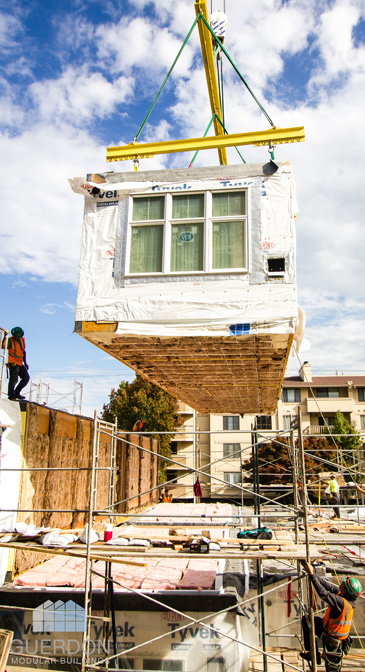Fei Tsen Discusses Windflower Properties’ Multifamily Project: Union Flats
Modular Construction Allows Faster, Cost-Effective Response to Bay Area Housing Shortage
Windflower Properties and its equity partner, CityView, partnered with Guerdon Modular Buildings on a large-scale multifamily project in Union City, California. The nearly 300,000-square-foot Union Flats project features 243 residential apartments and 2,400 square feet of retail space in two four-story buildings in the city’s new Station District, a former industrial site.
“All housing developments by Windflower Properties involve a social or civic aspect,” says Fei Tsen, president of Windflower Properties. “Whether it’s affordable housing as part of the project, building in a redevelopment transition area, or designing transit-oriented housing, supporting each community is a guiding principle behind every project that we build. Union Flats is no exception.” Windflower’s goals for the project were to build attractive, denser housing and to build in a very sustainable manner (the project has received a LEED platinum rating). The company had a very tight timeline for the project and concluded that the only way to meet the schedule would be to use modular construction – a first for Windflower.
“We did a tremendous amount of research before we decided to go the modular construction route,” says Tsen. Windflower interviewed a number of companies in the search to find the right partner. Tsen was looking for two primary criteria: the ability to meet the project’s tight deadlines, and financial stability. Because the modular units represent a large share of the construction budget, Windflower needed to make sure that the modular company would have the stability and financial wherewithal to meet the terms of the contract. “We were very impressed with Guerdon,” says Tsen, “especially when we visited their factory in Idaho. It was really a great operation.”
Scheduled for completion in spring 2017, Windflower’s Union Flats project is using 408 ‘modules’ built in Guerdon’s Boise factory. With modular construction technology, the projected build time for Union Flats is an entire year less than if traditional construction methods had been selected. This speed-to-market dramatically improves the returns on the project, and will more quickly meet the high demand for Bay Area housing.
“Modular is a technology whose time has come,” states Lad Dawson, Founder of Guerdon Modular Buildings. Other countries, particularly in Europe and Asia, have been quicker to embrace modular construction; however, he says, the U.S. is beginning to recognize that it’s a “faster, smarter, higher-quality way to build.”
The speed advantage is widely understood, but other benefits include a higher-quality product, a greener process and a quieter structure. In terms of the benefits for developers, the compacted schedule reduces many of the risk factors associated with traditional construction methods. “You’re on-site less,” says Dawson, “so there’s less site disturbance, less disturbance of the neighborhood, less chance of injury. Safety is enhanced because there are fewer people on the job site and they’re there for a shorter period of time.” But most importantly, the costs are more stable, decreasing the risk of budget overruns, and the number of trades is reduced, lessening the potential for labor issues and increasing the predictability of the entire process. “Developers love the idea that they have a greater level of control over a project,” says Dawson – and modular provides that, thanks to the certain time frames and consistent quality of assemblies.
According to Tsen, Windflower will consider modular technology again for future projects. “I am a great believer in modular construction, particularly because it can shorten the time for construction and it can provide a better quality of product,” she explains. “And in the areas where we work, there’s such a lack of housing – there’s such a need for housing – that I think that we need to deliver housing more quickly and also in a more cost-effective way, and I think modular technology is one of those ways in which we can do that.”
Dawson agrees. “Now, particularly in the Bay Area, is the right time for modular because there’s just a shortage of housing,” he says. “We need a lot of housing and we need it quickly. So just going about it the same old way, and trying to produce the old-fashioned slow way, isn’t going to help make a dent in the housing shortage that we have now. A modular solution can provide quicker construction – quicker projects that get up faster and get people into residences quicker.”








